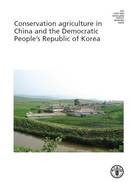Ресурсы

Papers - Conservation Agriculture (CA) comprises the practical application of three interlinked principles, namely: no or minimum mechanical soil disturbance, biomass mulch soil cover and crop species diversification, in conjunction with other complementary good agricultural practices of integrated crop and production management. In 2015/16, CA was practised globally on about 180 M ha of cropland, corresponding to about 12.5% of the total global cropland. In 2008/09, the spread of CA was reported to be about 106 M ha. This change constitutes an increase of some 69% globally since 2008/09. In 2015/16, CA adoption was reported by 78 countries, an increase in adoption by 42 more countries since 2008/09, respectively. The average annual...

Papers - This paper reviews (a) the principles that underpin conservation agriculture ecologically and operationally; (b) the potential benefits that can be harnessed through CA systems in the dry Mediterranean climate; (c) current status of adoption and spread of CA in the dry Mediterranean climate countries; and (d) opportunities for CA in the Central and West Asia and North Africa region.

Papers - The sustainability of agricultural production is regaining importance, particularly in view of the predicted population increase. Terms such as “sustainable production intensification” are widely discussed within the global development agenda. In the area of agricultural crop production one term – no-till – is leading to increased polemic and polarization of the parties. No-till or no-tillage describes a form of cropping which does not use mechanical tillage of the soil for crop establishment. Mechanical tillage, a standard operation in agriculture since ancient times, is mostly symbolized by the use of the plough. Where ever it has been practiced, it has led...

Papers - This working paper describes the introduction of conservation agriculture in the Democratic People’s Republic of Korea and China by two FAO projects. The technical components, design and results of the projects are summarized. This publication is addressed to readers with a background or an interest in agriculture or those with a developmentrelated professional background.
